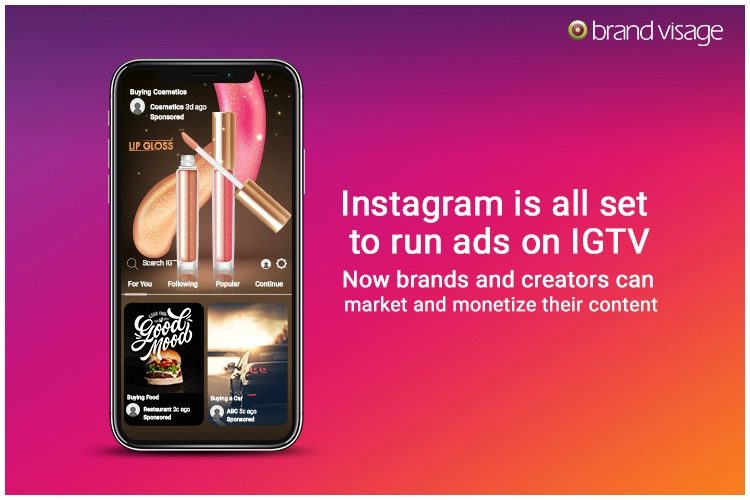Continue to discover top influencer marketing trends to watch in 2021…
7. Planning and Data Will Rule
As we talked, performance-based contracts and offers will extend and that means planning and knowledge will play an essential role. Now that manufacturers and influencers are more comfortable working together, you will see more collaboration between manufacturers and influencers in planning campaigns and a lot more interest in tracking the social media marketing metrics that permit manufacturers to know the influencer they find is worth what they’re paying them. Whereas influencer networks already have some analytics and reporting in place, solo influencers are going to wish to understand what social media metrics are essential to allow them to deliver on promises.
8. Video Content Will Enhance (Even More) In Popularity
Sure, we all know. At least the last seven years, video content has been on everybody’s list of not simply influencer marketing trends. However, marketing trends generally. And there is a good reason for that. Folks just love video. With the growing popularity of TikTok and the introduction of Instagram Reels, we will be seeing more video content than ever. Plus, IGTV is simply sitting there, waiting for Instagram to let loose the rain of advert revenue that everybody is expecting once they stop testing and let adverts go live on the platform.
The purpose is, even with platforms like YouTube, Facebook, TikTok, Instagram Reels, IGTV, and lots of more, shoppers are barely getting their itch. On Facebook alone, the variety of users watching live videos elevated 50% in early 2020. Sure, there was a global pandemic and lockdowns occurring, however, a 50% increase is huge.
9. Authenticity Will Be the Watchword
For the previous few years, there’s been a powerful pull for “authentic” content. This implies influencers need to watch out with the content that they create for manufacturers. This is ensure that the products they take on are going to resonate with their audiences. In fact, this is also something that manufacturers have to be careful about. Even the most engaging influencers can’t whip their followers into a frenzy over a product. It will not benefit the brand trying to make it work. Besides, the influencer will likely lose credibility within the eyes of their viewers.
Instead, influencers and brands ought to seek out partnerships solely with different influencers and brands whose audiences overlap with theirs. Blatantly sponsored posts themselves aren’t the issue, regardless of what some social media marketing experts would have you believe. You don’t have to forgo manufacturing value or makeup to make your sponsored posts feel more authentic. What makes sponsored content authentic is a real sense of excitement about the brand and the product you are talking about. And this could come throughout regardless of whether or not you are just sitting in your room or recording on a yacht. Until you are doing a sponsored post for a yacht-builder, in which case recording on a yacht would make much more sense.
What we tend to lose sight of when talking about the demand for authentic content is what we really need from the content. For many audiences, that means deeper connections with the influencers they follow along with value-driven content. Instead of a regular sponsored post that is modeled after a TV advert, why not try doing a Q&A about the brand or product you are sponsoring, or a video that reveals what it is like to use it? You may even talk about the issues you don’t love a few brands or products as long as you ensure your followers know that the product. The bonus for influencers is that your viewers will believe you more. For manufacturers, it’s going to present your integrity. And integrity is endearing.
10. Cause and Issue Marketing Will Proceed to Develop
2020 brought us much more in the way of social activism and a number of influencers and platforms worked to focus on the lack of diversity and equality in influencer marketing. Blackout days became a regular occurrence, drawing attention to how platforms are or aren’t representing certain populations. Instagram and TikTok, specifically, were brought into the spotlight for being everything from anti-black to anti-fat to anti-sex work. Whereas there are miles to go before any social media platform can actually laud for its inclusiveness and celebration of diversity, 2020 finally pushed them in that course more so than any previous time.
This drive towards range and inclusion will have an effect on manufacturers. Besides, it impacts on the way they select influencers to partner with, too. However, that is just the beginning of what is to come. Whereas we’ll finally begin seeing a more varied number of influencers, manufacturers may also want to alter how they do business as a whole to construct diversity and inclusion into each aspect of their brand. More and more, manufacturers might be pressed to take a stand—more than symbolically—on social justice and political topics that they have been allowed to shy away from in the past. It ought to come as no surprise that influencers will get that pressure, too. It shall be anticipated to be more discerning of the manufacturers they partner with.
11. Social Commerce Will Bring New Sponsorship Opportunities
In 2020, manufacturers had been pressured to get creative with the way they related with buyers. Brick-and-mortar shops scrambled to embrace eCommerce and eCommerce stores, immediately discovering themselves with more competitors, needed to find methods to supply buyers better and easier ways to purchase. The year principally pressured more manufacturers to embrace new technology faster—and forced the creators of recent technology to fast-track their innovations.
As such, we have seen new alternatives for influencer marketing and brand sponsorships via social commerce. Shoppable videos and shoppable posts have created a seamless consumer experience from influencer content to brand channels, in addition to farther-reaching eCommerce solutions. In 2021, influencer marketers ought to expect these developments to proceed and seek out partnerships with manufacturers that are prepared to incorporate shoppable content of their influencer marketing campaigns.
12. Employee-Driven Content Will Enhance
An influencer marketing trend for 2021 that stems from the demand for more authentic content. We have already seen how user-generated content can have a huge effect on sales and the way manufacturers are perceived; it solely is smart for manufacturers to start treating their own employees as influencers via employee advocacy programs.
We have already seen how this works for manufacturers like Macy’s. Macy’s presents incentives and financial rewards to employees who use Macy’s products if sharing that content results in sales. This works for Macy’s staff and corporate itself because shoppers are fascinated by seeing “how the sausage will get made”. There is a reason why the video of a Wendy’s worker buy more than 3 million views. Folks need to know what goes on behind the scenes at a company. Giving staff the go-ahead to share that content just makes sense.
13. Paid Advertising Will Be Key for Broad Reach
The final of the influencer marketing trends on our list for 2021 is all about advertising. Sure, we understand that paid adverts are usually not used along side influencer marketing campaigns. Nevertheless, manufacturers and influencers will each benefit from the paid amplification of the content created by influencers. Utilizing the fine-tuned focusing on available on Facebook Ads or via the advertising tools for different social media platforms, manufacturers will have the ability to push out high-quality influencer content to the individuals who care about seeing it, without relying on social media algorithms to make it occur.
2020 was a year of surprising marketing problems that required out-of-the-box thinking to solve. As we look forward to influencer marketing trends for 2021, these solutions are going to put to the test.


